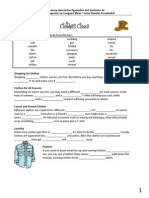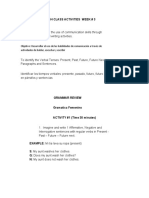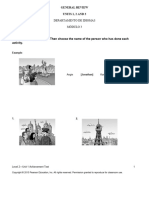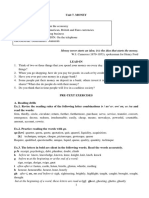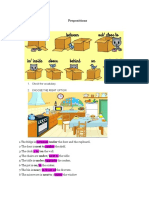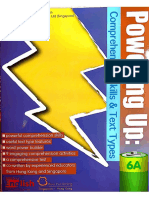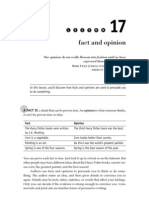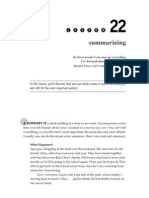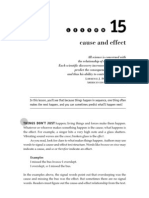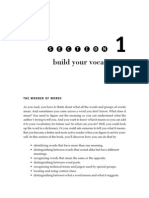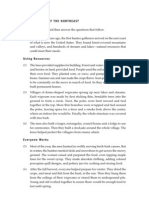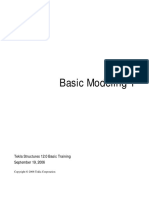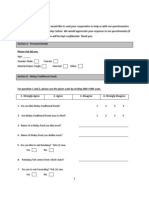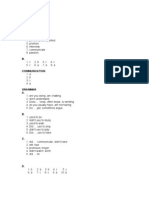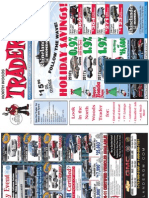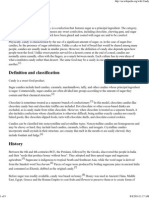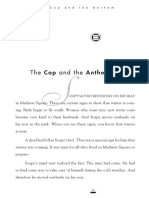L
terminology and jargon
It is more fun to talk with someone who doesnt use long, difficult words but rather short, easy words like What about lunch?
A. A. MILNE (18821956) ENGLISH AUTHOR WINNIE THE POOH
In this lesson, youll discover that the words you use may differ, depending on who youre talking to.
PEOPLE WHO WORK together or do things as a group may have their own
language of special terms, or jargon, that makes it easy for them to communicate with one another. For example, if you use the Internet, you know what IM (instant message), website, and sayings like LOL (laugh out loud) mean. But someone whos never used a computer might be very confused! There are special terms and jargon that relate to science, art, music, cooking, politics, and just about any topic. On the following page are some examples.
�52
build your vocabulary
Word aperture apogee blog braise caucus colonnade currency ligaments subtrahend wings
Topic photography space Internet cooking politics architecture banking medicine math theater
Meaning camera lens opening an orbiting objects highest point from Earth short for Weblog, a personal journal to share online prepare slowly with little moisture in a closed pot a meeting of only members in a political party row of columns coins and paper money fibers that connect bones number that is to be subtracted areas off both sides of the main stage
Read this sample of jargon and see if you can guess what group of people might use the language. Squeeze one, two chicks on a raftwreck em, shingle with a shimmy and a shake, and city juice86 the hail. If you guessed people who work in a restaurant, especially a diner, youre right. Its how some waiters give an order for one orange juice, two eggs on toastscrambled, buttered toast with jam, and waterhold the ice! Now thats really a special vocabulary.
P R AC T I C E 1 : Q U I E T O N T H E S E T !
Read the selection, and then answer the questions that follow. (1) Last summer I visited my uncle Ron. The public relations rm he works for was handling the ads for an upcoming movie, and he took me to watch a shoot! Lets go meet the a.d., Ron said when we got to the studio. (2) You meet an ad? I asked, a little confused. (3) Oh, sorry, thats the assistant director, he laughed. You get so used to the jargon on the set that you gure everyone else knows it.
�terminology and jargon
53
(4) The a.d., whose name was Mim, pointed out that The d.p. is using a dolly to track some actors running a scene. I guess I looked confused because she smiled, Hes the director of photography, or cinematographer . . . around here we just call him the d.p. He runs the camera; its his job to get the best shot every time! (5) And the cameras on a dolly, I said knowingly, I saw a platform on wheels like that at my dads store. Its on tracks, like a train. Is it always there? (6) No, we move them after the d.p. gets the nal shot, she replied. (7) Just then, someone called, Wheres the gaffer? We need a blue gel. And can someone just close the barn door on that one? he called, pointing up. (8) They need an electrician, Uncle Ron whispered. They want a blue lter over the light . . . blue light is softer, not so harsh. (9) Got it, I replied. But whats a barn door? (10) Mim pointed up at the huge lights. See the aps on the front of the light? They can be opened or closed to give more or less light. We call them barn doors. (11) I didnt say it, but I thought, Thats silly; why not just call them aps? (12) Later, I saw two actors lming a sword ght in front of a green wall. Without scenery, how will anyone know if theyre in a castle or on a cliff? I asked. (13) Thats where c.g.i. comes in, explained Mim. The action is lmed in front of a blue or green screen, then a computer-generated image is dropped in for the background. Itll make them look like theyre dueling atop the Statue of Liberty or in a hall at Buckingham Palace, whatever the lmmakers want. (14) So if I see an actor riding a camel in a desert, is he really doing it? I asked. (15) Sometimes, Mim replied. Some lms are shot on location at different spots around the world. But it costs less to use blue-screen and c.g.i., so its up to the lmmakers and their budget. They may want movie magic. (16) We need background people for the next scene, someone called to Mim. (17) She nodded. Time for me to make sure the people you may know as extras are in place, she conded. Theyre the ones who give the scene a sense of realityfolks walking down a street or shopping in a mall as the stars do their thing.
�54
build your vocabulary
(18) After lunch, we watched more lming. Quiet on the set! someone called. Rolling! Action! (19) The background people began to move, then into the scene rode the hero, the star of the movie, on a real motorcycle! No green screen needed! 1. In which would you most likely use jargon like cinematographer? a. medicine b. sports c. construction d. lm production 2. What is the meaning of a.d. as used in the selection? a. after delivery b. artistic director c. assistant director d. actors directory 3. A gaffer is a. in charge of serving lunch on a movie set. b. a worker for an advertising agency. c. the star of a movie. d. an electrician. 4. A c.g.i. is dropped in as background for action thats shot in front of a. a live audience. b. a blue or green screen. c. Buckingham Palace. d. a white screen.
P R AC T I C E 2 : M O N E Y M AT T E R S
Read the selection, and then answer the questions that follow. (1) Today we use two basic kinds of currency, or money: metal coins and paper bills. But once people bartered, or traded, for things they needed or wanted. In ancient Africa, salt was really valuable because people in many places didnt have it, and they needed it to avor and preserve their food. So people would trade a bag of gold for a bag of salt!
�terminology and jargon
55
(2)
Then, about 3,500 years ago, people started using seashells as money. The North American Indians used wampum, beads made of clamshells. In about 1,000 B.C., the Chinese minted the rst metal coins. They had holes in the centers so they could be carried on a string, kind of like a key ring. Later, the Chinese invented paper money. Before long, people around the world used coins and paper money to buy goods. Most people kept their money at home, tucked under a mattress or a oorboard, or stuffed in a jar. But often the money was stolen or lost in a ood or re. And sometimes people just forgot where they had hidden it! Thats why banks were built. The special buildings were equipped with vaultsrooms where everyones money was locked up and guarded. People who put their money in a bank felt that the cash was safe. The rst bank in the United States opened in 1791. Today there are thousands. To open an account at a bank, a person must be at least 18 years old. Thats because only adults can legally sign papers needed to open the account. An account holder can deposit, or put in, more money from time to time. Its added to the balance, or total already in the account. He or she can also withdraw, or take out, money thats then subtracted from the balance. People can deposit or withdraw money at the bank or at an ATM (Automatic Teller Machine). Each account holder is given a plastic card that electronically holds information about the account. The machine scans the card, then allows the person to deposit or withdraw money, or check the current balance.
(3)
(4)
(5)
5. Jargon like currency, deposit, and ATM are used in the eld of a. baking. b. science c. banking. d. auto racing. 6. What is the meaning of mint as used in the selection? a. a avored candy b. awless c. green, leafy plant d. produced
�56
build your vocabulary
7. What is the meaning of vault as used in the selection? a. to leap over b. a burial chamber c. a room for the safekeeping of valuables d. to cover 8. Wampum was currency made from a. clamshells. b. turkey feathers. c. salt. d. paper. 9. To open a bank account, a person must be a. an American citizen. b. at least 18 years old. c. at least 21 years old. d. a high school graduate. 10. The meaning of balance as used in the selection is a. steadiness. b. set of scales. c. total. d. compare.
P R AC T I C E 3 : M A N AG E M I N E R A L S
Read the selection, and then answer the questions that follow. (1) Rocks are made of minerals. Those are substances that cant be classied as animals or vegetables. There are many different minerals. Each can be identied by its properties, or characteristics. To identify a mineral, scientists test its streak, hardness, luster, color, and cleavage. To test the streak, the mineral is rubbed on a marble slab to see if it leaves a mark, and if so, what color mark. To test hardness, the mineral is scratched on glass to see if it scratches the glass, and if so, how much. Scientists can see the minerals luster, or shininess, to know if its metallic or nonmetallic. The minerals color is also obvious to the eye. Finally, the mineral is checked for cleavagebreaks, or fractures, along weak points.
(2)
�terminology and jargon
57
(3)
An accurate identication of a mineral cant be done by checking just one property. Many minerals have similar properties, such as the same hardness or color. Always test all the properties before stating for sure which mineral it is.
11. In which topic would you most likely nd words like minerals and metallic? a. music b. cooking c. science d. ballet 12. Every substance is classied as either an animal, a vegetable, or a a. mineral. b. human. c. solid. d. liquid. 13. What is the meaning of streak as used in the article? a. run fast b. a mark of color c. to distort d. to stretch




